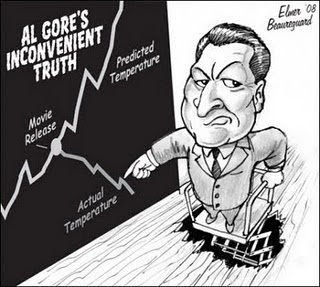New Climate Report Not Very Different From Other Climate Reports

By James Shott
December 18, 2018 - There are many legitimate reasons to question the warnings of climate doom, including the millennia long history of alternating periods of warming temperatures and ice ages, demonstrating that warming and cooling periods occur naturally.
Not the least of those reasons is the problems with climate science itself, as well as its proponents.

The issue, of course, is for scientists to accurately determine whether and how much human activities affect Earth’s atmosphere. The record on this is spotty, at best.
The famous – or infamous – “Hockey Stick” graph that showed a sharp rise in temperatures over a rather short period of time was wrong: Bad science. But it nevertheless created a great deal of fear of a dangerously warming environment.
In 2007, NASA released data showing that contrary to the opinion of the climate change faction that the warmest year on record was 1998, the warmest year was actually 1934, and the warmest four years were in the 1930s.
NASA also released data in 2015 that challenged the 2013 conclusions of organizations including the Intergovernmental Panel on Climate Change (IPCC) that Antarctica was losing land ice. NASA’s data showed the opposite: that Antarctica was in fact gaining ice.
In October, a scientific paper published in the journal “Nature” suggested ocean temperatures had risen roughly 60 percent higher than estimated. However, it was soon discovered that this frightening finding was due to a mathematical error.
And, although he’s not a climate scientist, and doesn’t even play one on TV, we can’t overlook Al Gore’s “An Inconvenient Truth,” a movie that provided gross misinformation, based upon predictions of doom of the grave threat of global warming. In 2006, The Washington Poststated that Gore "believes humanity may have only 10 years left to save the planet from turning into a total frying pan."
Well, 2019 is nearing, and things are roughly the same as they were at the time of Gore’s huge miscalculation. But no matter how far from reality his prognostications have been, his bank account swells pretty much in parallel with the growth of his carbon footprint. If carbon dioxide is so grave a problem, shouldn’t people like Gore show us the way to correcting that problem with their own behavior?
While Gore has implemented green energy mechanisms in his own home, he buys “carbon credits” to cover for his other excesses.
The day after Thanksgiving – Black Friday, interestingly enough – the 1,700-page National Climate Assessment went public, re-igniting fears of mass deaths, global food shortages, economic destruction, and national security risks resulting from climate change.
However, in keeping with past climate doom reports, this one also has some problems, which Nicholas Loris of the Heritage Foundation has discussed. Among the weaknesses he found are exaggerated economic costs.
One claim is that the worst climate scenario could cost the U.S. 10 percent of its gross domestic product by 2100, more than twice the percentage that was lost during the Great Recession. This is based on the assumption that the Earth’s temperature will increase by 15 degrees Fahrenheit, even higher than the worst-case scenario predicted by the IPCC. Is that realistic?
Further, “It estimates nearly impossible levels of coal consumption, fails to take into account the massive increase in natural gas production from the shale revolution, and ignores technological innovations that continue to occur in nuclear and renewable technologies,” according to Loris.
Even if climate data and the predictions resulting from it are accurate, how people react to this crisis is also relevant, and often problematic. See “Paris, December 2018,” where political climate change is actually occurring.
The protests followed the imposition of a fuel tax announced by French President Emmanuel Macron to curb diesel usage and invest in greener technology. For French citizens living in rural areas, where driving is a big deal, the tax would be very painful. Another factor is the immediate pain of higher taxes today for results to be achieved years or decades in the future.
And then there are the celebrity supporters of climate change measures who expect the rest of us to toe the line while they go along their merry way creating large carbon footprints.
Furthermore, if climate change is actually being significantly affected by the activities of mankind, who are the biggest offenders?
Well, you may be surprised to learn that the United States is neither a big offender, nor the least of those imposing carbon emission restrictions on its own citizens.
So, if action really needs to be taken to prevent the destruction of mankind and the planet, China and India are the first two places that need to change their ways. And there are many others who have not joined in, while the U.S. heads the list in reducing carbon emissions.
And, we cannot ignore that some of these climate scientists are activists, who have a political perspective that is fertilized by ample research dollars for the “correct” opinions on climate change.
No one, or at least few of us, wants to pursue a path that will actually be harmful to us, or our environment. But we must have truthful, accurate information upon which to determine our course of action.

